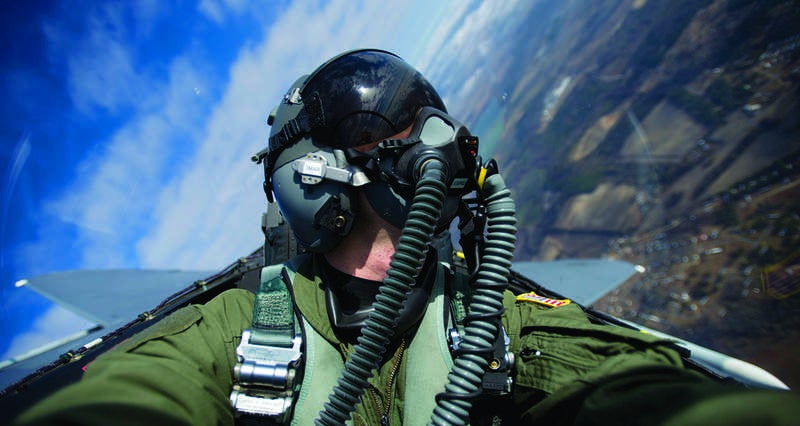
The US Navy has carried out three test flights using the VigilOX pilot breathing sensor system on-board its F-18 Hornet and T-45 Goshawk aircraft.
VigilOX is the first pilot-worn sensor solution that can comprehensively capture real-time physiological, breathing gas and cockpit environmental data during flight.

Discover B2B Marketing That Performs
Combine business intelligence and editorial excellence to reach engaged professionals across 36 leading media platforms.
It has been developed by UK-based manufacturing company Cobham.
The real-time data is expected to be used by the navy to help provide information regarding unexplained physiological events.
The US Navy, in collaboration with Cobham and other medical and research professionals, is currently in the initial stages of reviewing the post-flight data, which is set to be correlated to reported hypoxia-like symptoms.
Data acquired from the VigilOX system will form the basis of a predictive algorithm, which is expected to eventually enable breathing equipment to automatically adjust oxygen dosage as required in order to protect pilots during flight.

US Tariffs are shifting - will you react or anticipate?
Don’t let policy changes catch you off guard. Stay proactive with real-time data and expert analysis.
By GlobalDataFuture iterations of the system will see the integration of VigilOX pilot breathing sensors directly into the mask to reduce the size and mass of the equipment.
Cobham’s auto-response guided oxygen system (ARGOS) is expected to be a smart data-driven, human machine interface, which will have the ability to control the entire pilot oxygen system ‘from air source to mask’.
Cobham Mission Systems Environmental Systems product director Rob Schaeffer said: “Having these developmental sensors flying, along with testing in the lab, will show what happens in the aircraft and physiologically under hyperventilation or hypoxia-like conditions, and will inform us as we work to design a mitigative response to protect the pilot.”
Cobham also supplies a CRU-123 solid state oxygen monitor that captures critical data regarding oxygen concentrator performance.
The US Navy’s T-45 training jet recently conducted the first flight to feature both the CRU-123 and VigilOX systems on-board the same aircraft in order to gain a comprehensive understanding of aircraft and pilot physiological interaction from air source to mask.
The VigilOX sensors worn by pilots have been designed for use within a wide range of aircraft, while the CRU-123 oxygen monitors are noted to be easily retrofittable.





